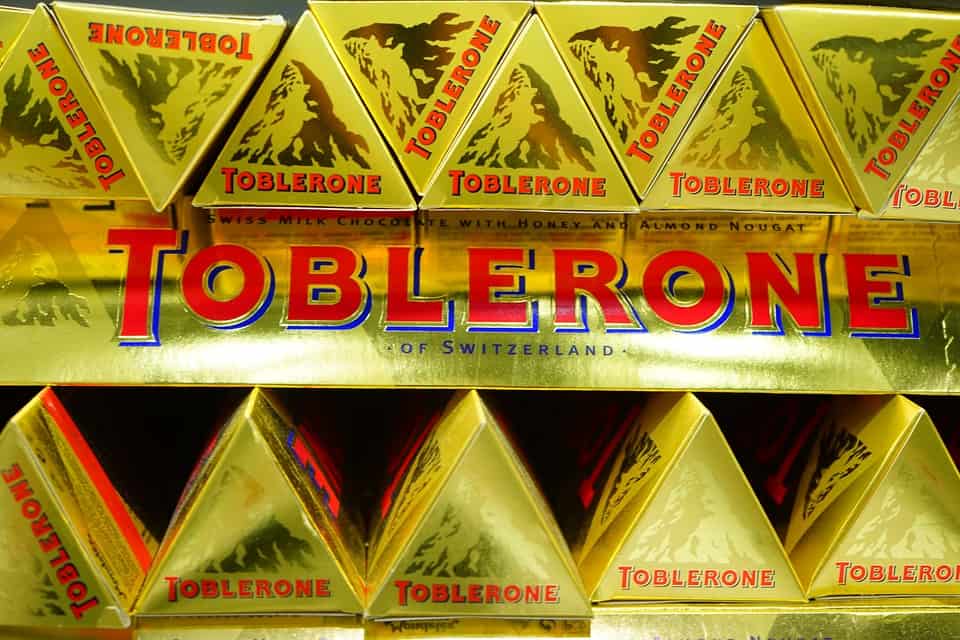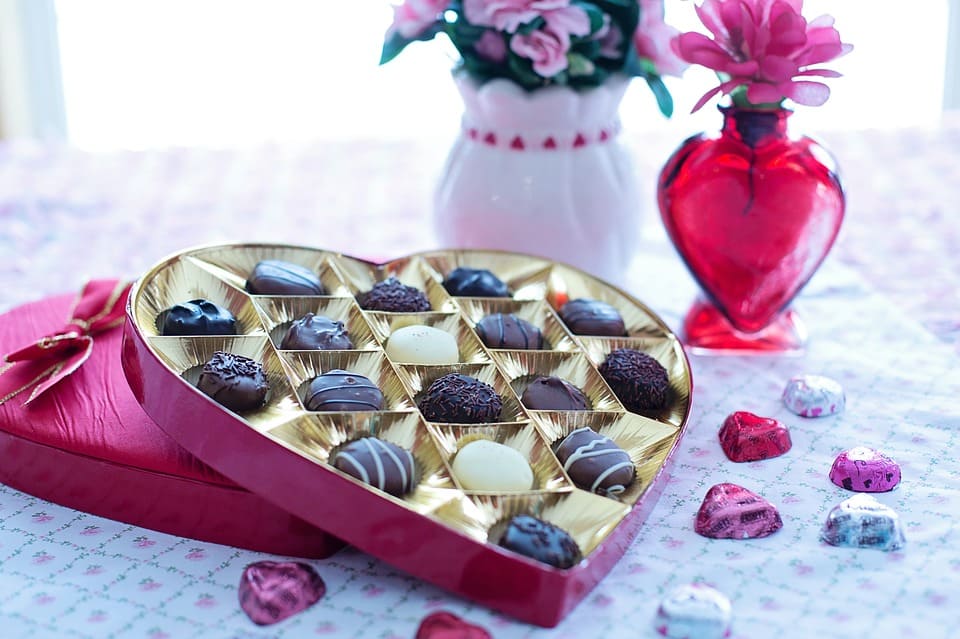Here at Kempner, we’re fascinated by the importance of packaging on every level, from preserving contents and keeping items fresh to standing out on the shelves to make consumers select a product above its competitors. Our recent blog post, Fascinating Facts about the Importance of Packaging looked at this in more detail, addressing the industry as a whole and uncovering some surprising facts you might not have known about why a brand should spend time focusing on the aesthetics and functionality of their packaging. This week we’ve decided to focus on specific brands that pride themselves in their unusual or iconic packaging that in turn has helped to define the product itself. Read on to reveal the history and stories behind each product, many of which you’ll be familiar with seeing on supermarket shelves, to help explain how it got to where it is today.
Toblerone
We are going to start with family favourite Toblerone, the world’s favourite triangular chocolate that has made a name for itself as a classic present from the airport for many countries, particularly in Europe. The confectionary was created in 1906 by Swiss chocolatier Theodore Tobler, and him and his production manager, Emil Baumann, were said to be inspired by Swiss mountain, the Matterhorn. The Matterhorn is Switzerland’s most famous landmark, and so designing Swiss chocolate, which they are also well known for around the globe, centred around this makes sense. It is also the world’s most photographed mountain, with photographers far and wide inspired by its symmetrical, pyramidal peak.
While this all makes perfect sense, there is an alternative theory about the inspiration behind the iconic yellow and triangular packaging provided by his sons. They speak of a time when Tobler visited the Folies Bergéres in Paris, where he witnessed a human pyramid being formed by dancers at the end of a cabaret show. It is the grand finale of this show, they claim, that inspired Toblerone’s iconic shape. Interestingly enough, this is in reference to the design of the chocolate itself. However, Toblerone is also a prime example of how the two go hand in hand in terms of working together to create a brand, and given that the unusual shape was almost the unique selling point of the triangular bar, the two needed to co-exist in order to ensure success.

The Tiffany Box
The renowned Blue Tiffany & Co box has become a global symbol of luxury and sophistication since its first release in 1878 and is now sought after by jewellery enthusiasts and collectors almost as much as the ornaments themselves! It has been described as “the most recognisable and most desired retail container in history” which is telling of its vast success as it is, to put it simply, just a blue box. So, what is it about the box that makes the packaging so desired by society? Many suggest that founder, Charles Lewis Tiffany, decided on this shade of blue as a result of the popularity of turquoise jewellery amidst wealthy women at the time. The colour would have been a connotation of the finer things in life at the time, and once the luxury brand had established itself as a premium item, it is quite difficult to shake such a reputation. In essence, several things came into play here; the popularity of turquoise, the international perception of the colour and its connection with luxury and the brand continuing this idea that it was the height of sophistication. All of these factors contributed to those little blue boxes becoming more of a symbol of status rather than packaging.
Heart-Shaped Chocolate Boxes
When February 14th comes around, it’s difficult to find a chocolate manufacturer that doesn’t offer their own chocolates in the shape of some kind of heart, and other holidays including Christmas and even Easter are now tapping into the heart-shaped trend – but where did it all begin? British chocolate company Cadbury is said to have introduced the packaging to consumers back in 1861. Founder, Richard Cadbury, was seeking a way to use the pure cocoa butter that was taken from the drinking chocolate manufacturing process. A new product, known at the time as “eating chocolates” was devised, and Cadbury packaged and sold the heart-shaped boxes, which he had designed himself. During this time, the Victorian elite often gifted chocolate as a token of affection, and the boxes, which were covered in flowers, hearts and cupids, soon became more of a symbol of a gesture than what it actually was – some chocolates. This soon became the most popular way to gift chocolate and once the contents were eaten, consumers could hold onto the packaging for a beautiful keepsake box. As Valentine’s Day became more and more commercialised, Cadbury’s and it’s heart-shaped boxes experienced vast success, and is now one of the most iconic box of chocolates that is available.

Red and White Campbells Soup Can
Love it or hate it, tinned soup is available all over the world, but one of the first brands that comes to mind when you think about it is the iconic red and white label of Campbells. The brand was even featured in a series of famous pop art paintings by Andy Warhol, and is one of the world’s leading tinned food brands, but did you know that the cans were once wrapped in blue and orange? It may sound strange that varying colours can completely change a brands reputation, but it’s difficult to imagine the supermarkets lined with blue and orange. The change occurred as a result of a football game in 1897, where treasurer at the time Herbert L. Williams was inspired by the red and white uniforms worn by Cornell as they played the University of Pennsylvania, and he proposed to the board that they changed their own colour scheme to match.
We hope these stories behind some of the most recognised packaging gives you an insight into just how important aesthetics can be in the industry. However, it’s worth bearing in mind that you can’t have fantastic, innovative, appealing packaging without the functional wrapping that keeps the product fresh. Here at Kempner, we’re happy to advise businesses, new and old, in terms of their packaging wants, needs and requirements. Browse our extensive range of shrink wrap machinery online today or contact us to find out more.


